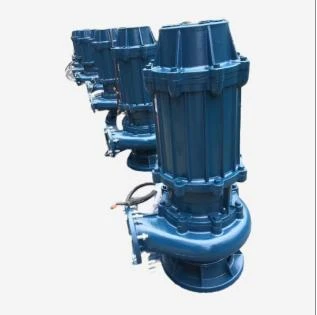Turkmen
- Afrikaans
- Albanian
- Amharic
- Arabic
- Armenian
- Azerbaijani
- Basque
- Belarusian
- Bengali
- Bosnian
- Bulgarian
- Catalan
- Cebuano
- Corsican
- Croatian
- Czech
- Danish
- Dutch
- English
- Esperanto
- Estonian
- Finnish
- French
- Frisian
- Galician
- Georgian
- German
- Greek
- Gujarati
- Haitian Creole
- hausa
- hawaiian
- Hebrew
- Hindi
- Miao
- Hungarian
- Icelandic
- igbo
- Indonesian
- irish
- Italian
- Japanese
- Javanese
- Kannada
- kazakh
- Khmer
- Rwandese
- Korean
- Kurdish
- Kyrgyz
- Lao
- Latin
- Latvian
- Lithuanian
- Luxembourgish
- Macedonian
- Malgashi
- Malay
- Malayalam
- Maltese
- Maori
- Marathi
- Mongolian
- Myanmar
- Nepali
- Norwegian
- Norwegian
- Occitan
- Pashto
- Persian
- Polish
- Portuguese
- Punjabi
- Romanian
- Russian
- Samoan
- Scottish Gaelic
- Serbian
- Sesotho
- Shona
- Sindhi
- Sinhala
- Slovak
- Slovenian
- Somali
- Spanish
- Sundanese
- Swahili
- Swedish
- Tagalog
- Tajik
- Tamil
- Tatar
- Telugu
- Thai
- Turkish
- Turkmen
- Ukrainian
- Urdu
- Uighur
- Uzbek
- Vietnamese
- Welsh
- Bantu
- Yiddish
- Yoruba
- Zulu
Telephone: +86 13120555503
Email: frank@cypump.com
Nov . 25, 2024 20:24 Back to list
Cost Analysis of Centrifugal Double Suction Pumps for Various Applications
Understanding the Price Factors of Centrifugal Double Suction Pumps
Centrifugal double suction pumps are widely utilized in various industries for their efficiency and reliability in handling large volumes of fluids. These pumps are designed with two impellers, allowing them to produce higher discharge pressures with minimized vibration and improved stability. However, when considering the purchase of a centrifugal double suction pump, potential buyers must navigate a plethora of pricing factors that can influence the final cost. This article aims to break down these elements to provide clearer insight into the pricing landscape of these industrial pumps.
1. Design and Engineering
The design of a centrifugal double suction pump significantly impacts its price. Custom designs tailored for specific applications or environments — such as those requiring high corrosion resistance or specialized materials — can lead to increased costs. Typically, pumps designed for special applications will undergo extensive engineering analysis, which can inflate the overall price. In contrast, standard designs often have mass production advantages, potentially lowering their price.
2. Material Selection
The materials used in the construction of the pump are critical in determining its cost. Common materials include cast iron, stainless steel, and bronze, each varying in price based on their properties and resistance to environmental factors. For instance, stainless steel pumps tend to cost more than their cast iron counterparts due to their superior corrosion resistance and longevity. Additionally, pumps that incorporate advanced materials or coatings designed to withstand harsh conditions will likely be priced higher.
3. Flow Rate and Performance Specifications
Centrifugal double suction pumps come with various flow rates and head capacities, both of which can significantly influence price. Higher capacity pumps, capable of handling larger volumes or delivering greater pressure, often come with a steeper price tag. Buyers should evaluate their operational needs to ensure they select a pump that meets these requirements without over-investing in unnecessary capabilities.
centrifugal double suction pump price

4. Brand and Manufacturer Reputation
The brand reputation and the manufacturer’s experience in the industry play an essential role in pricing. Established manufacturers with a history of reliability and innovation often charge a premium for their products. This reflects not only their investment in research and development but also the assurance of quality and after-sales support. Conversely, lesser-known brands may offer more competitive pricing but could compromise on features, performance, or warranty terms.
5. Market Trends and Economic Factors
Like any other product, the pricing of centrifugal double suction pumps can be influenced by market trends and economic conditions. Supply and demand dynamics, fluctuations in raw material prices, and even geopolitical events can impact the manufacturing costs of these pumps. For instance, during periods of increased demand, prices may rise. It’s essential for buyers to stay informed about market trends that might affect pump pricing and availability.
6. Maintenance and Lifetime Costs
When evaluating the price of centrifugal double suction pumps, it is also crucial to consider the total cost of ownership, including maintenance and operational costs. While a lower upfront investment may be appealing, pumps that require frequent maintenance or have shorter lifespans can ultimately lead to higher expenditures over time. Investing in a higher-quality pump may result in reduced maintenance needs and longer service life, proving cost-effective in the long run.
Conclusion
In summary, the price of centrifugal double suction pumps is influenced by various factors, including design, materials, performance specifications, brand reputation, and market conditions. Prospective buyers should carefully assess their requirements and budget while considering the long-term implications of their purchase decisions. Ultimately, understanding these price determinants will enable smarter purchasing choices, ensuring that they invest in the right equipment for their specific operational needs.
-
ISG Series Vertical Pipeline Pump - Chi Yuan Pumps Co., LTD.|High Efficiency, Low Noise, Durable
NewsAug.02,2025
-
ISG Series Vertical Pipeline Pump - Chi Yuan Pumps | High Efficiency, Low Noise
NewsAug.02,2025
-
ISG Series Vertical Pipeline Pump- Chi Yuan Pumps Co., LTD.|High Efficiency&Compact Design
NewsAug.02,2025
-
Heavy-Duty Mining Sludge Pumps - Wear-Resistant Slurry Handling
NewsAug.02,2025
-
Horizontal Split Case Pump with GPT-4 Turbo | High Efficiency
NewsAug.01,2025
-
ISG Series Pipeline Pump - Chi Yuan Pumps | High Efficiency, Durable Design
NewsAug.01,2025










